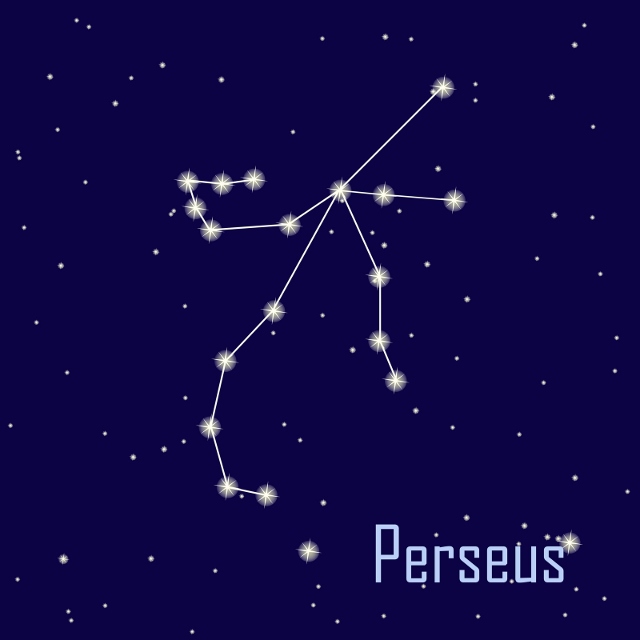saveourplanetearth.com
Call us: (775) 831-1331
Skywatching: The Perseid Meteor Shower
My son lives in Phoenix, certainly a big city, and every time I visit, I’m amazed at the lack of night sky. The sky is simply an eerie glow, with few stars to be seen.
Not so at Tahoe! It isn’t difficult to find suitable areas for sky watching, which is exactly what a friend, Mark Lytle and I did a few nights ago with the purpose of catching part of the Perseid meteor shower.
Meteor viewing is best after midnight, when the Earth is turning into the path of the debris stream. Given our work obligations, it is difficult for us to stay up past midnight so we decided we would sleep out under the stars, so that whenever we happened to wake up during the night, which was often due to sleeping on the ground, we would just have to open our eyes to gaze up into the sky.
It was a chilly evening, so we brought and set up a tent, just in case we needed to make a run for warmth during the night but we managed to stick it out, often buried deep within our bags, until morning.
This particular shower has a radiant point within the constellation Perseus, which appears in the Northern sky. Perseus is also in the same area as the Milky Way, which was also visible.
Mark, who is a handy guy to have around, came equipped with an app called Star Walk 2, a guide to the night sky for finding the positions of stars, planets and constellations, as well as giving information about meteor showers — the dates and where to look for them.
Point your phone to the sky and it tells you what you are looking at: the names of planets, constellations and stars; it also draws out the constellation.
Upon arrival at our chosen site, Mark brought out the phone and, using the app, located the constellation Perseus so we were able to orient our sleeping bags for optimum viewing.
We saw the first meteor at 10 p.m. and decided to dive into our bags and try to sleep some, setting an alarm for 3 a.m. I awakened a few times before then, as did Mark, and all we had to do was open our eyes to watch for streaking meteors. This is definitely the way to watch a meteor shower—I believe I have another addiction.
The Perseids pass by Earth every year, beginning in mid-July, peaking around the middle of August. This year the sky was not brightened by a full moon; in fact, the new moon was August 13 this month, coinciding with the peak range for meteors.
The debris creating this display is actually from the comet Swift-Tuttle, which ejects a cloud stream as it travels on its 133-year orbit. Much of the debris that we see in the form of “falling stars” has been part of the cloud for 1000 years and, as bright as they appear to be, most meteoroids are between the size of a grain of sand and a pea.
How can anything that small create such a bright presence? Meteoroids travel at speeds exceeding 25,000 miles per hour in the vacuum of space. Upon entering Earth’s atmosphere, they begin to heat and vaporize, causing what appears to be a tail which can be miles long before the piece completely disintegrates.
We should be able to see meteors from Perseus through the end of this month. The next meteor display will come in October, originating from the constellation Orion. In November we have the Leonids and in December the Geminids. And I must say, you won’t catch me sleeping on the ground during those times!
My friend Mark and I have been camping buddies forever. We try to get out at least once a year, more if we’re lucky. As we arrive at our camping destination, in two cars, and disgorge a huge volume of supplies from these two cars, I always have to joke, “Backpackers we are not!”
We enjoy being out in the woods, unplugged, yet we require our comforts such as inflatable mattresses, large tents and boxes of cooking utensils. Whatever it takes, find your way to get out into the woods, even if you have to haul your hammock, camp stove and multiple coolers along. For me, it inspires a feeling of peace to sleep outside, with the whisper of the wind in the trees, lulling me to sleep.
If there happens to be a full moon, or a meteor shower—that’s a bonus.
Some meteor facts:
• The term “meteor” actually refers to the light created by space debris
• The debris itself is called a meteoroid
• Remnants that reach the earth are called meteorites
• Meteoroids are generally between the size of a grain of sand and a pea
• They travel at speeds exceeding 25,000 miles per hour
• A fireball is a large meteor with the brightness of Venus created by an object as large as several meters in diameter
• Objects larger than 100 meters are called asteroids
canstockphoto.com



